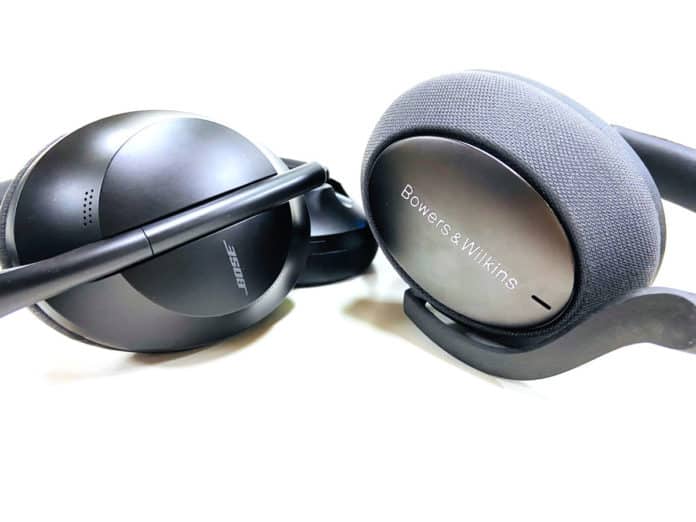If I had a dime for every Bose or B&W review I’ve written, I’d be able to afford a Bose or B&W headphone. MajorHifi has published many reviews about the Bose 700 and B&W PX7 already. But discerning consumers are suckers for a comparison review. And this one’s for those who are already familiar with one of these models but need a solid comparison before taking the plunge. So, take a load off and peruse through our Bose 700 Headphones vs Bowers & Wilkins PX7 Review.
Bose 700 Headphones vs Bowers & Wilkins PX7 Review
FIT
The Bose 700 Headphones fit more comfortably on the head. The earpads are softer and the clamping force is looser than the tight fit of the PX7.
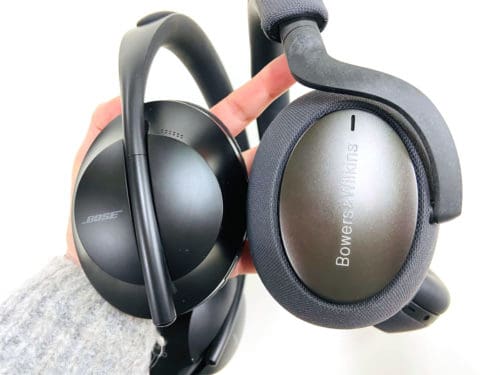
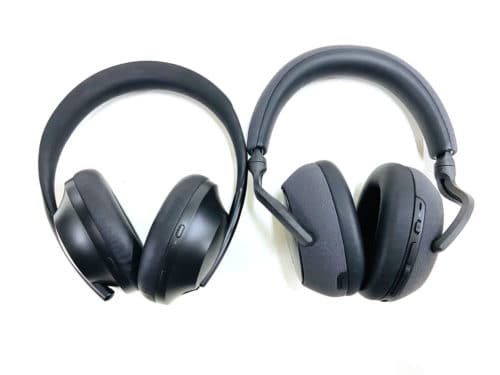
DESIGN
Controls and Functionality
The 700 uses a combination of buttons and touch controls, while the PX7 relies solely on buttons. I much prefer buttons over touchpads, and here’s one reason why: When I picked up the Bose 700, I would inadvertently activate the voice assistant function, which would slow down operation of the headphone. Speaking of voice assistants, the PX7 does not offer this feature, which is peculiar for such a pricey headphone. But let’s be honest, our voice assistants are a pain in the ass.
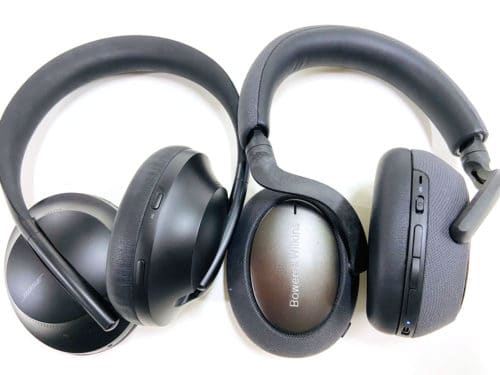
Active Noise-Cancellation
The Bose 700 has more effective noise-cancellation than the Bowers & Wilkins PX7. But the difference is marginal. The other thing to note is that while the PX7 only offers 3 different ANC levels (excluding auto/adaptive mode), the 700 gives you 10 different levels. This may seem like overkill, but snowflakes like me are sensitive to the pressure created by noise-cancelling frequencies. For these fussy folks, getting exactly the right ANC level might greatly alleviate their existential suffering.
Battery Life
The PX7 wins in this category, providing 30 hours of battery life in comparison to the 20 hours offered by the Bose 700 Headphones. But both headphones employ USB-C connections for charging, which means they both charge quickly.
Call Clarity
The Bose 700 has better call clarity. The caller sounded cleaner and the microphone was more sensitive as well.
Extra Features
Both headphones have accompanying apps that give you added control over the functionality of your headphones. The 700, for example, allows you to adjust between all 10 levels of ANC. (On the headphone itself, you can only switch between 3 levels). However, unlike Sony’s and Sennheiser’s ANC headphones, neither the 700 or the PX7 come with an equalizer.
SOUND
Low Frequencies
Both headphones have a similar level of bass presence. But the bass on the 700 is cleaner and more detailed, while the bass on the PX7 is slightly warmer and fatter. So, unsurprisingly, listening to acoustic instruments, the 700 was more nuanced and natural in its presentation.
Middle Frequencies
The midrange on the PX7 is more evenly balanced. So, listening to tracks with heavy instrumentation, the PX7 presents a more full-bodied and all encompassing sound. In contrast, the 700 produces more emphasized upper mids. As a result, vocals sit in front of the mix, offering a more dynamic feel. So, if you like your sound to really pop when listening to pop, the 7PX would probably be more suitable. At the same time, those who are particularly sensitive to harshness in the higher frequencies may find the PX7 to be more forgiving on the ears. And again, the 700 shows superior resolution overall. It just has a cleaner, more crystalized feel. In contrast, the PX7 feels rounder and more smoothed over in its presentation.
High Frequencies
The Bose 700 offers more extension in the high frequencies. And it will give you a little more sparkle and presence in this range. So, again, if you’re easily bothered by high frequencies, the PX7 is a safer bet. Listening to vocals in this range, the 700 conveyed a cleaner and lighter profile, while the PX7 gave a thicker and more velvety performance.
Soundstage
The 700 offers a more spacious feel with more precise imaging. In fact, it makes the PX7 feel a little insulated and wishy washy in comparison. So, if you value a roomy and colorful soundscape, then you’ll gravitate towards the 700.
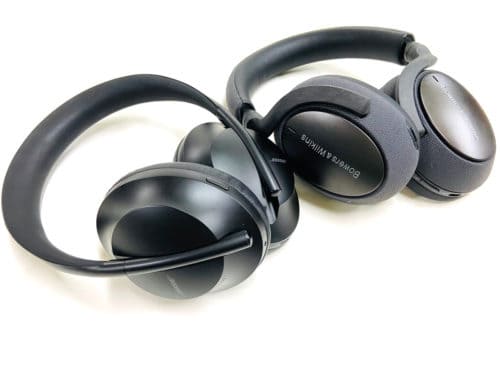
PROS & CONS
Bose 700 Headphones
Pros: Great sound resolution; effective ANC; good call quality.
Cons: Touch controls can be frustrating.
Bowers & Wilkins PX7
Pros: Smooth and easy listening sound signature; long battery life.
Cons: Call clarity could be better; no voice assistant, but what good is she anyway.
SUMMARY
In terms of clarity, precision and ANC technology, the Bose 700 is the superior headphone. The call quality and level of comfort is also better than that of the PX7. However, the PX7 is more naturally balanced and more enjoyable to listen to overall. So, if you’re easily fatigued by higher frequencies, the PX7 will be the more forgiving choice.
You can find both of these headphones for the best price here:
Bowers & Wilkins PX7 at Audio 46
Bowers & Wilkins PX7 on Amazon
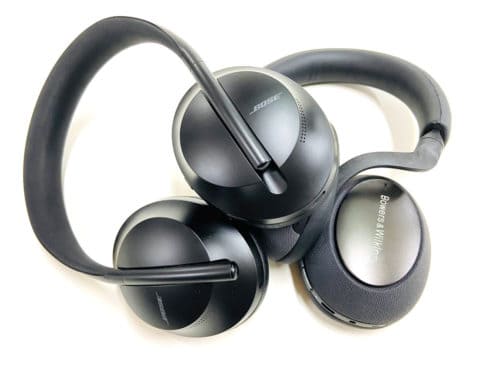
MajorHiFi may receive commission through retail offers.
Compare the ranking of various headphones, earbuds and in-ear monitors using our tools.
Discuss this, and much more, over on our forum.
---MAJORHIFI may receive commissions from retail offers.


